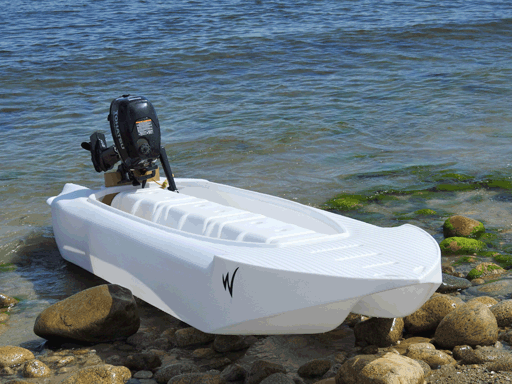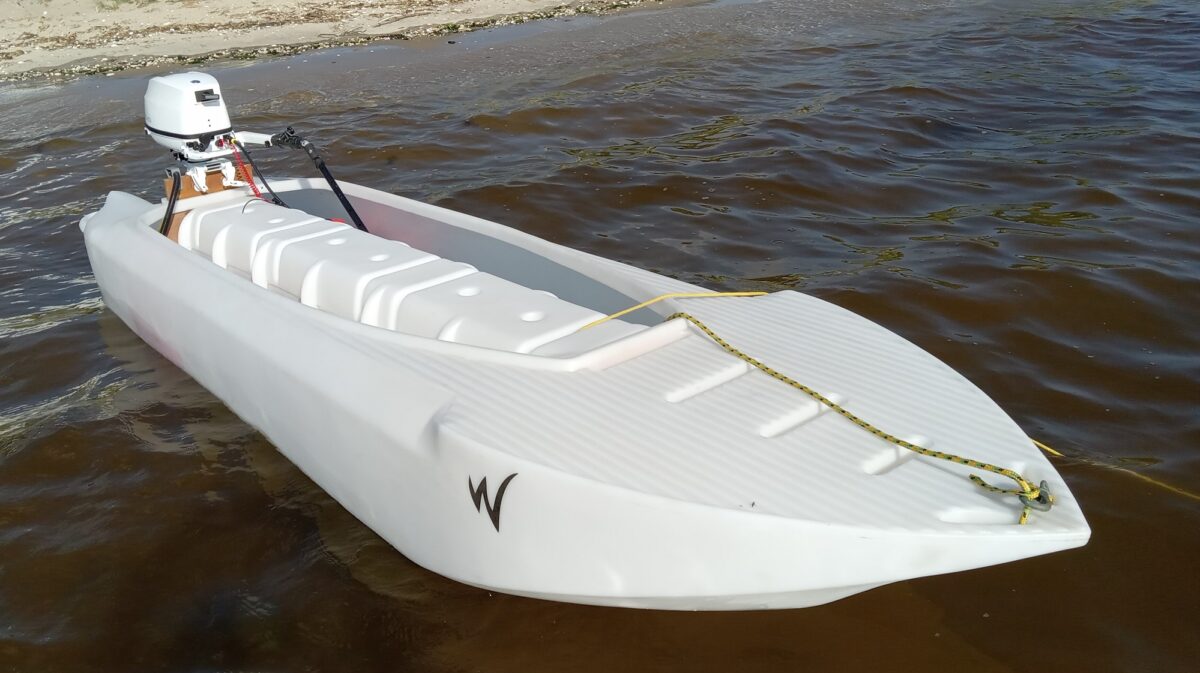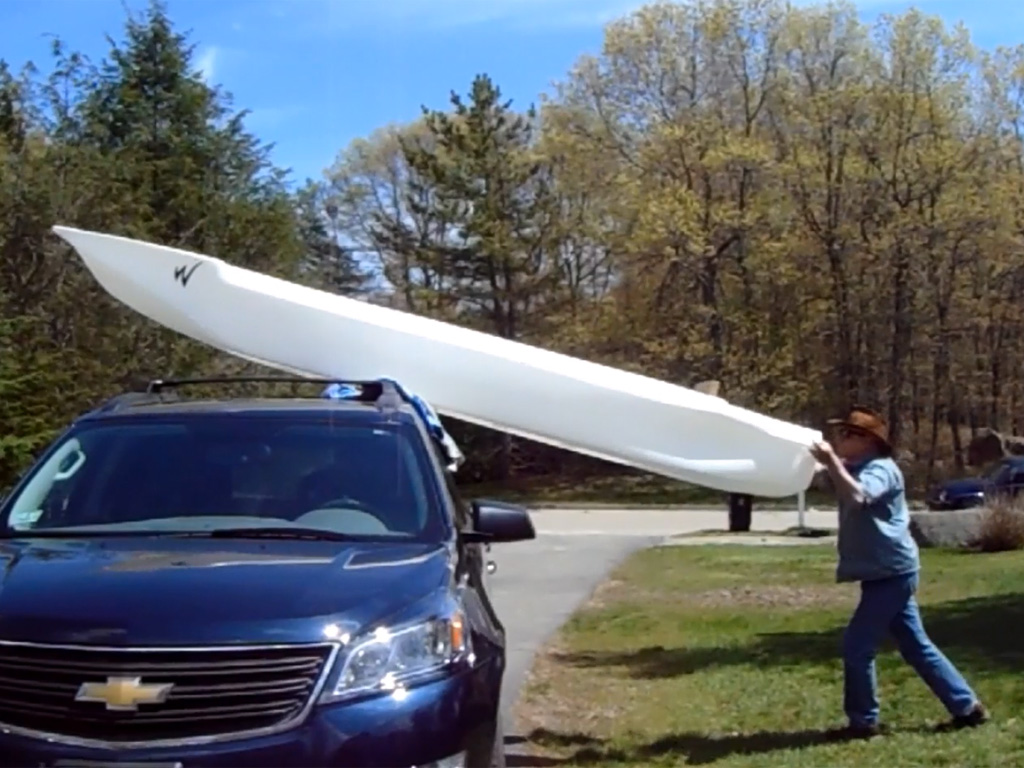HOW TO CHOOSE A PORTABLE BOAT
What is a portable boat?
A portable boat is a small, lightweight boat that can be easily transported on the roof of a common passenger vehicle, and carried by hand to the water and back from it by one or two persons. Portable boats are also referred to as car-top boats.
By definition, a portable boat does not require a trailer for transportation.
But when portability is concerned, not all trailer-free boats are equal, and some boats (e.g. small dinghies and Jon boats) and motorized boards are small and lightweight enough to be hauled onto a pickup truck bed, but too heavy and bulky for car topping and easy carrying, which is why these vessels are not considered as portable boats.
Kayaks are small vessels that are typically lightweight enough to be car topped and carried by hand, but since kayaks don’t lend themselves to effective motorizing, they are not considered as boats, and the same is true for most canoes, with the exception of very wide, square-stern canoes that can be driven on flat water with a small outboard gas motor.
Kayaks equipped with electric trolling motors are still considered to be kayaks and not portable boats, similarly to bicycles that are not designated as motorcycles even when outfitted with small motors.
A motorized board labeled as a skiff for a solo user would not qualify as a portable boat even if in the future a lightweight enough version of it is produced, because it lacks the load capacity and free board that are expected from a boat – even a small one.
In sum, in order for a vessel to qualify as a portable boat, if must be both a fully functional boat and fully portable.
Why is portability important?
Portability has advantages both in economic and time terms.
In dollar terms, portability offers you to save the money that you would have had to spend on a boat trailer, and spend it on the boat itself, and on other useful equipment such as electronics, fishing gear, etc.
More importantly, a portable boat makes you gain productive, fun time on the water that you would have otherwise spent driving to or from a boat ramp, which is the only place where you can launch a boat from a trailer. A portable boat also saves you time waiting at a boat ramp to launch your boat, and waiting for others to launch their boats or take them out before you can take out your own boat. Not having to depend on boat ramps guarantees that you’d never drive to a boat ramp just to find that there’s no more parking space left there for your vehicle and trailer.
At its highest level, portability gives you the freedom to launch anywhere you want, as seen in this video –
Types of portable boats
Rigid Hull
Some dinghies, Jon boats and square-stern canoes are small and lightweight enough to be car topped. They are made from aluminum, fiber reinforced plastic (FRP) – typically fiberglass, or polymer resin (plastic) such as Polyethylene.
Having a rigid hull means that these boats are ready to be driven without additional work such as inflating and/or assembly, and once the trip is over, they can be car-topped without deflating and/or disassembly.
The only difference between a car-top boat and a boat transported on a trailer is that a car-top boat requires mounting the outboard motor on it before launching, and dismounting it after the end of the trip. For an experienced boater, mounting the motor and dismounting it takes a couple of minutes.
Folding Hull
A folding hull is made from rigid panels attached by flexible sections. Folding a boat makes it take less space, and being less bulky can be an advantage for transportation.
Upon arrival to the launching spot, a folding hull needs to be unfolded, and the boat requires assembly for its seats, transom, etc., which can take up to twenty minutes. Disassembling the boat and folding it back can take a similar time, and altogether, whatever time is gained as a result of not having to launch at a boat ramp thanks to the lack of a trailer, might be wasted on tedious assembly and disassembly work.
Inflatable Boat
Some inflatable dinghies are made solely from soft parts, and others, namely rigid-inflatable boats, or RIB, include rigid components as well. This requires inflation and assembly before launching, and disassembly plus folding upon return from the trip. These activities take time, even if you’re experienced and equipped with a good electric pump.
Inflatable boats are not very popular among anglers, who prefer to avoid fishing from a boat whose hull might be perforated by a fishing hook, a knife, or other sharp object that anglers typically carry on board.
Catamaran
Some small catamarans feature rigid hulls (pontoons, actually), and they can be disassembled and transported in sections, on top of a car roof. Typically, such catamarans are used for sailing, and they are rarely used for fishing and hunting.
Other issues with portable boats
Aside from the problems that some portable boats present as far as assembly and disassembly time is concerned, some designs leave much to be desired in terms of seaworthiness, stability, and comfort –
Canoes are either round bottomed or flat bottomed. The first type of hull is extremely tippy, especially for a crew of more than one passenger, while the second type is moderately stable on flat water, and unstable on moving water.
Portable Jon boats and rigid dinghies that feature a flat bottom are moderately stable on flat water, but not stable enough for trips or fishing in moving water, or in the presence of wakes from big motorboats.
Portable Jon boats and dinghies that feature a shallow V hull perform better in moving water, but less so on flat water.
Portable Inflatable dinghies are very wide, and designed to go in moving water, but these boats are not comfortable.
What is the most portable boat?
At slightly less than 100 lbs, the Wavewalk S4 is the world’s most lightweight boat for a crew of more than two adult passengers, and it also features a fully rigid twin-hull that requires neither inflation nor assembly. These two facts combined make the S4 the world’s most portable boat.
What is the most stable portable boat?
For a boat that requires neither inflation nor assembly, the Wavewalk S4 is the world’s most stable in its class. With a load capacity of over 600 lbs and a saddle seat that’s similar to the seat of large-size high performance personal watercraft (PWC), this patented boat can carry up to three adult passengers on board – all of them standing up.
What is the most seaworthy portable boat?
This question is more difficult to answer, since many inflatable and rigid-inflatable dinghies are very wide and designed to go in rough water. However, for a rigid hull portable boat, the Wavewalk S4 is the most seaworthy.
What is the most comfortable portable boat?
Typically, portable boats feature simple bench-like seats, or basic swivel seats. None of these seating accommodations is particularly comfortable, and they don’t offer good means for a user to balance themselves.
In contrast, the Wavewalk S4 features a saddle seat that prevents back pain, and allows for easy, natural, intuitive, and fully effective balancing, even in rough water. Both the driver and passengers of the S4 can ride (straddle) the saddle while facing forward, or sit side-saddle while facing sideways. This is true even for a big and heavy person who weighs more than 300 lbs.
What is the most versatile portable boat?
Hands down, the most versatile portable boat is the Wavewalk S4, since it works perfectly in a non-motorized mode, both with canoe and kayak paddles, in a solo and tandem mode, and it features a frontal casting deck, as skiffs do.
Being most seaworthy, the S4 can serve as a perfect tender for a yacht or a big motorboat, and it can be effectively towed behind the mother ship, as well as hauled on board.


